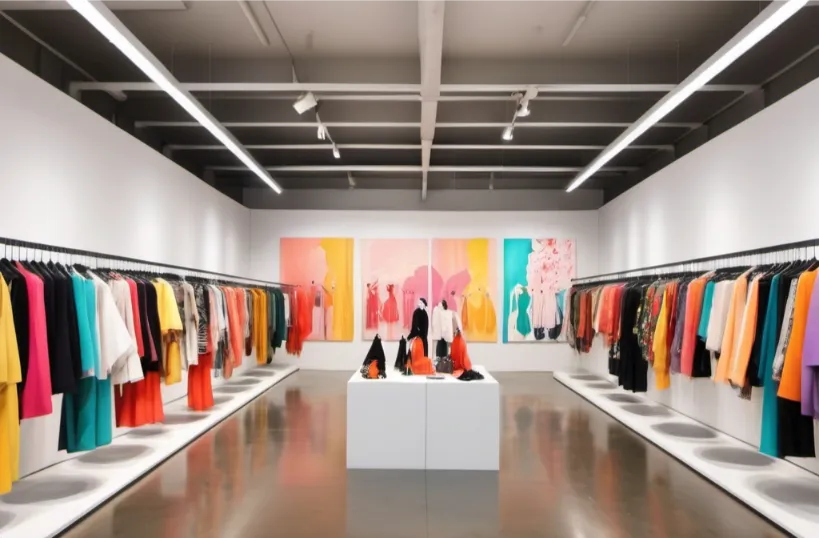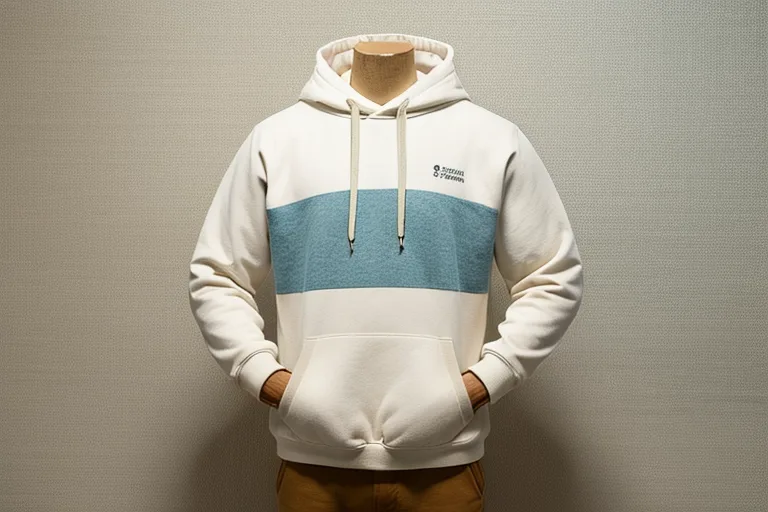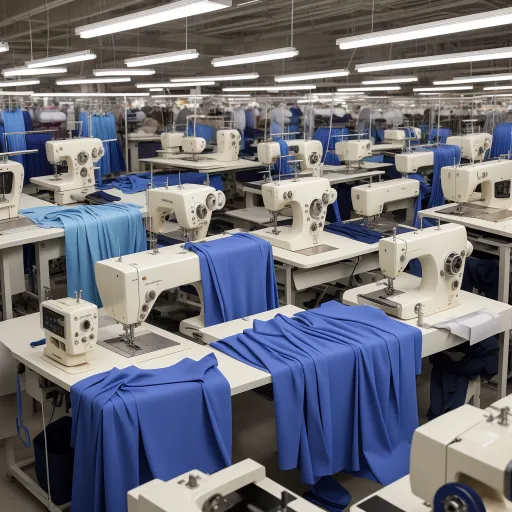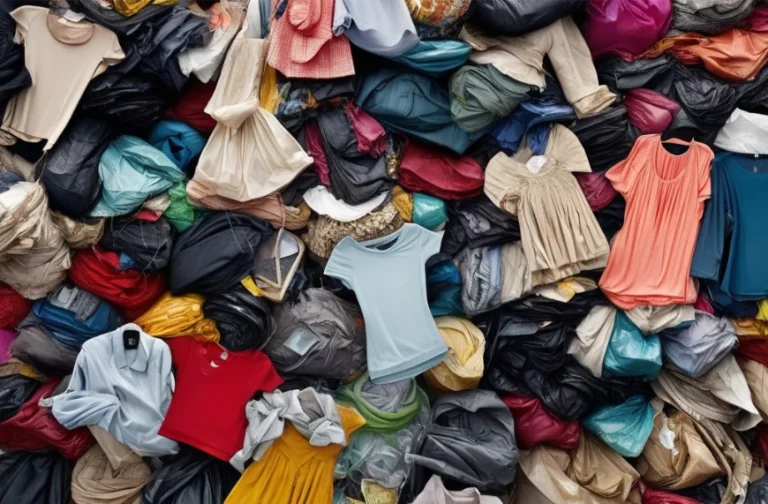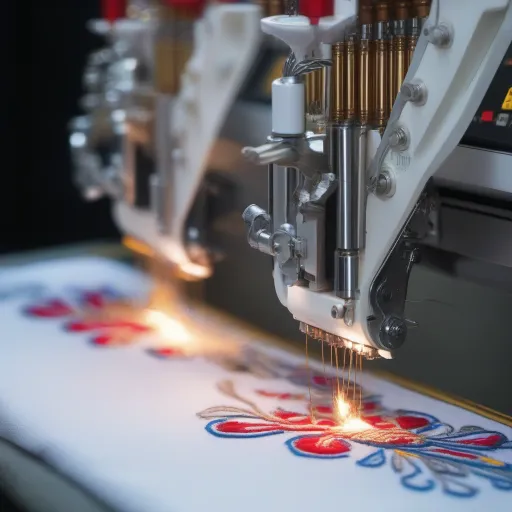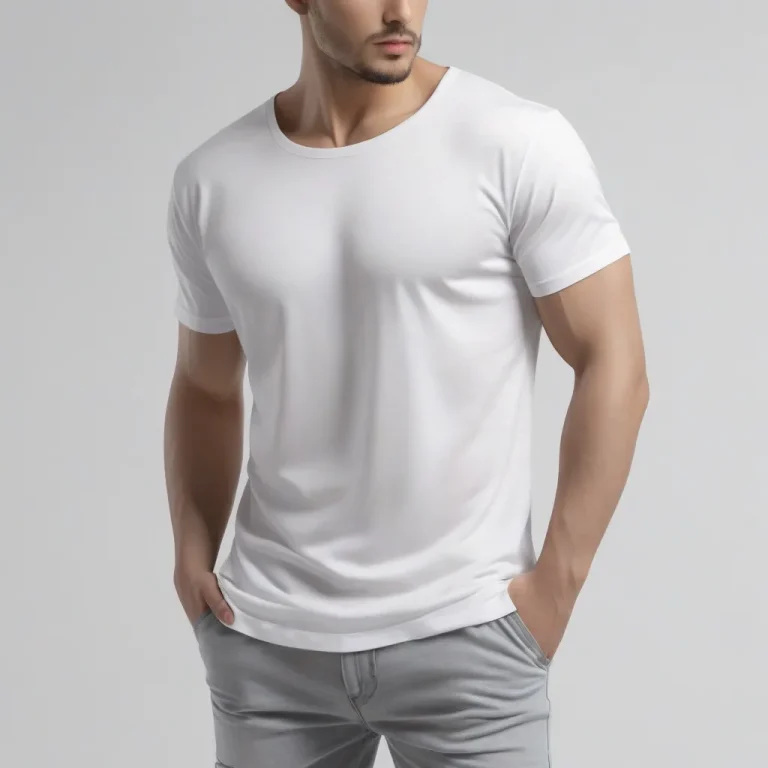The Market Size in Fashion Industry is 2.5 Trillion Dollars
Undoubtedly the fashion industry is one of the most influential factors that shapes culture, identity, and also economy.
The fashion industry has a tendency to constantly change seasonal collections and global trends.
The industry constantly on a regular basis. If we want to understand the size of the fashion industry, we can have a broader idea about the businesses, the investors and the consumers.
This post is sure to be a comprehensive breakdown of the total fashion market size. We explore the segmentation, challenges, primarily drivers of the fashion industry.
Global Fashion Industry
The global fashion industry is one of the most complex and largest sectors in the global economy.
Everything from garments manufacturing, trade shows, shipment, to the final disposal of the used items, the global fashion industry is valued at approximately 3 trillion dollars in 2023.
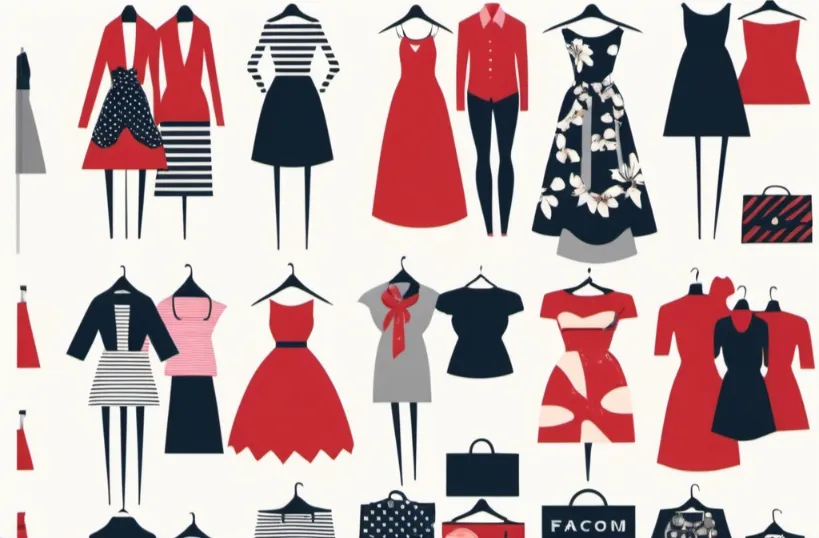
That means this accounts for more than 2.00% of the global GDP. The key players in the global fashion industry are apparel, footwear, textile and jewelry items.
The fashion industry is primarily contributed by the apparel industry. Only the textile industry contributes up to 2.5 trillion dollars.
The footwear industry contributes about 859 billion dollars to the global economy.
The Market Size in Fashion Industry By Different Segments
If we truly try to understand, we need to understand the market size of the fashion industry. We need to look for the different segments as these segments individually contribute to the global economy.
Apparel and Clothing
Undoubtedly apparel and the clothing industry is the backbone of the fashion industry globally. This industry represents the hard work of more than 430 million people.
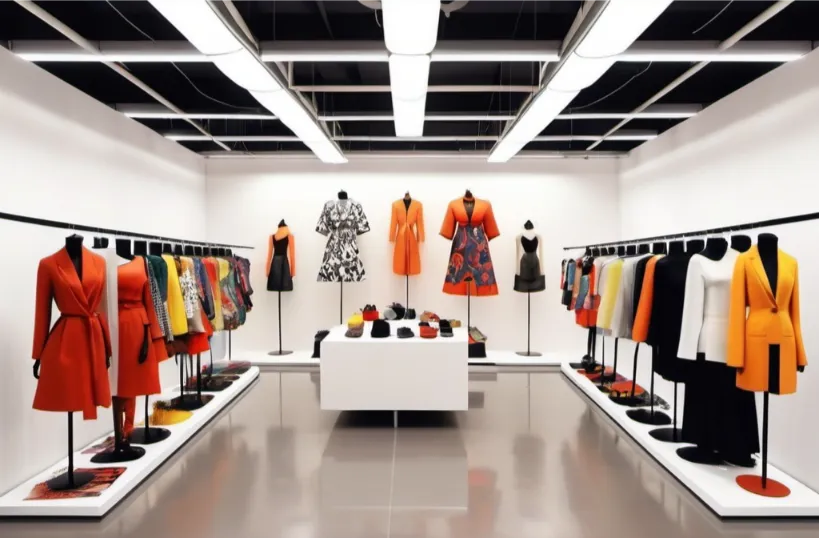
This global apparel and textile market is estimated to surplus 2.5 trillion dollars by 2024. This industry has seen rapid growth due to the increase of global macro economic activity.
Fashion items including sportswear that are also a key factor in the clothing industry. This market is seeing growth with the global supply chain of natural and man-made fabrics, raw materials and supply chain network.
Footwear
Footwear is another significant player in the fashion industry. It contributes to the overall economy. The global footwear market is estimated to reach 400 billion dollars in 2023. This can reach up to US$505.7bn in 2025.
This footwear industry is a growing market. The consumers are highly in demand of sportswear, athleticwear and casual footwear. These are playing a significant role in this industry.
Fast Fashion
The fast fashion industry has seen significant growth in recent years. Especially the growth of shein, which is a chinese brand, revolutionized the way consumers buy clothing.
Manufacturers and the producers of this company are using big data and not artificial intelligence to identify the customer demand for a specific product before the product is even produced. The customers are pre-booking the product.

After the company produces the product, it’s sent directly to the customers. The step creates a quick turnaround time. It also pushes traditional fast fashion brands like Zara, Forever 21 and H&M with tough competition.
These brands focus more on trend analysis and assumptions rather than data and analytics. This fashion industry technology is pushing the boundaries of the fast fashion industry. This industry can reach up to 184 billion dollars by 2025.
Ecommerce
Ecommerce platforms like amazon, shein, Temu and alibaba are the key players in this industry. With the rise of social media and increased online activity of the consumers, the fast fashion industry is getting popular among the consumers.

Ecommerce purchases have risen to all-time highest on the global level. The consumers are more free to shop online and offline combined with the influence of social media. This digital marketing is leading the way for customer purchasing decisions.
Geographical Breakdown of Fashion Market
The fashion industry is not confined to one single region. Globally, this market varies from significant geographical areas. The primary players in this case are not only European or North American markets.
China, India and the pacific regions are also key players. Nowadays, middle eastern, west african are also emerging as a growing market. To analyse this fashion industry trend, we will break down the major fashion markets.
North America
North America is the key player in the global fashion market as its primary player is the United States. The USA is expected to exceed 160 million tons of products in the fashion industry by 2050.
This shows that the fashion industry is booming in the region. Mexico is expecting a boom in the fashion industry with the growing economy.
Sustainability approach, availability of high-tech clothing makes the North American market as one of the key regions for the fashion industry.

Major brands like nike, ralph lauren are operating in this industry. Also micro fashion brands are also getting significance.
The fashion industry in this region is heavily dependent on imports. Countries like China, Bangladesh, Vietnam are the key exporters to this region.
European Market
Europe is historically one of the largest fashion manufacturers. This fashion trend leads European countries like italy, Germany to become the forefront of fashion innovation. This European market is valued at 937 billion dollars in 2023.
France and Italy alone account for a significant portion in the global fashion industry with their market concentrated around Paris and Milan. These cities are also known as the fashion capitals of the world.
Major brands like Zara, Primark, Inditex were born in and are actively operating in this region. Super shop chains also play a significant role in spreading the fashion industry.
Like North America, European manufacturing is also led by major countries like China, Bangladesh, and India.
Asia-Pacific
Asia pacific with its global customer base and manufacturing hub, leading the fashion industry from the front.
China is undoubtedly the largest manufacturer of the fashion industry with over 65% market share in fashion manufacturing.
India is also playing a significant role. The Asia Pacific region is expected to see one trillion dollars in the fashion market.
It’s driven by the growth of middle income and increased demand for high quality and luxury items.
India is also a fast growing market in fashion with its vast population and young generation in that industry.
The fashion industry is also heavily influenced by global trends. Bangladesh is well known for its high quality garments manufacturing.
Middle East and Africa
The Middle East and Africa are also key players nowadays. Countries like uae, Saudi Arabia, Qatar, Oman are experiencing rapid change and growth in the fashion industry. With its rapid growth, the consumption of luxury and non-luxury items has increased.

The higher middle class expanded in this region and they are more demanding of luxury fashion items.
This region is attractive to the global brands and with its increasing importance the middle east is a game changing player in the fashion industry.
Key Drivers in Fashion Market Growth
There are several factors that directly contribute to the expansion of the global fashion market.
Especially technological advancement, sustainability approach and changed consumer behavior play a significant role.
It can be seen that globalization and cultural shape also has an impact on fashion growth. Let me get into the details.
Technological Advancement
Technology has seen a major turn in recent years. Fashion technology is especially seeing major growth.
Major technological advancement including the emergence of artificial intelligence, data driven fashion design, automated manufacturing process, increased online shopping experience and virtual fitting room are rapidly growing.
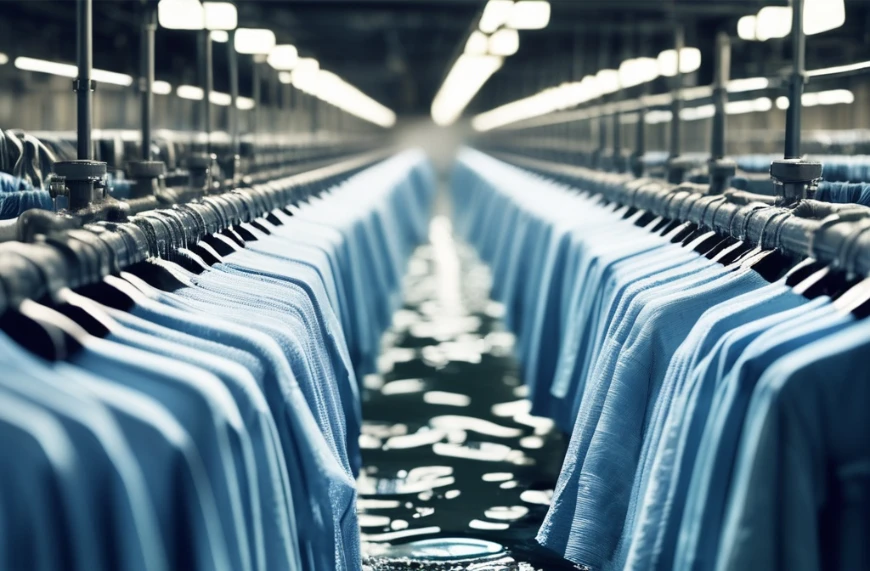
Technologies like automated manufacturing and automated shopping facilities are changing convenience.
Creating new revenue streams for the industry. The fashion industry is integrating with sustainable materials and approaches to bring new innovation.
In this sector online shopping has increased as the increased use of social media and online activities increase the technology and the market growth of the fashion industry.
Sustainability Trend
The consumers are becoming more aware of sustainability. An increasing number of brands are looking for a sustainable approach in the manufacturing process.
They are demanding eco-friendly and ethical practices in every aspect of fashion manufacturing and distribution.
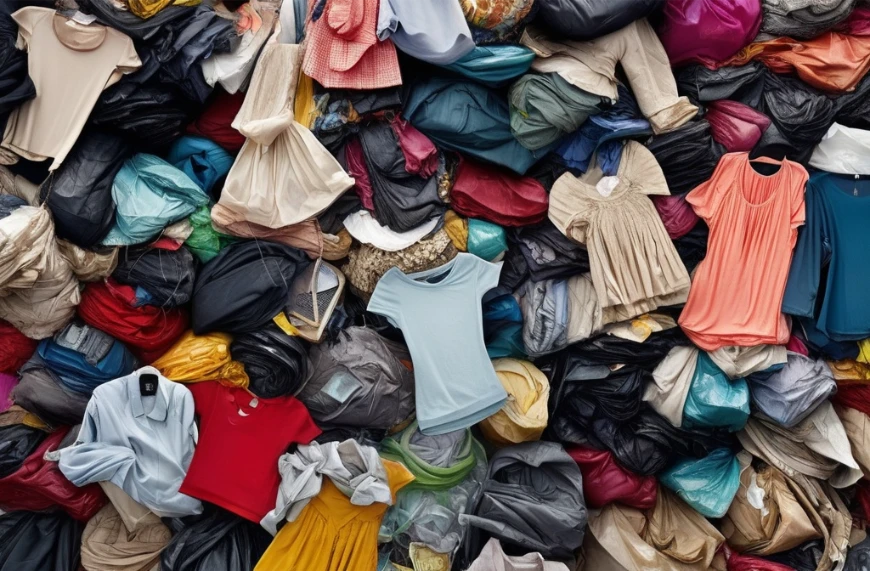
Companies are also responding to the customers’ demand and they are becoming more innovative in material sourcing, production and sustainability.
Some of the companies are also focusing on recycling and sustainable approaches to expand market growth.
This also helps these companies to adapt to the circular fashion models. This also increases the market growth of the fashion industry.
Changing Consumer Behavior
The consumers of today are more informed than any other time because they have more power to the information.
With the rise of social media, online and offline news outlets, consumers are more informed.They can make decisions to consume fashion items from around the world.
Especially the younger generation like millennials and Gen Z are leading the way because they have the ability and technological knowledge to use social media, e-commerce platforms. They are also a more conscious consumer.
Global Globalization and Cultural Shift
The fashion industry is also shifting due to globalization. The countries are adapting to the open market policies. The companies also are eagerly operating in a globalized world.
The product is made in Vietnam, Bangladesh or China but it’s sent to the USA or Canada’s remote areas with the use of highly advanced technology, supply chain, cross border exchange and foreign business policies.
As we become faster, the world is more interconnected today. With the support of social media trends one region can quickly influence another region.
Consumers from the counterparts of the world are also adapting to the global fashion trends.
Challenges Faced In Fashion Market
There is tremendous growth in the fashion market. Despite that, there are several challenges that the industry is facing.
Currently some of the challenges include sustainability and environmental impact, economic uncertainty and supply chain disruptions.
Sustainability and Environmental Impact
The fashion industry comes with pollution. This industry relies on cheap and disposable materials and the use of pollution to the environment. These cheap and disposable materials create a massive waste.
This fashion sector is one of the most polluting industries in the world. It needs to come with greater accountability. Brands are now under pressure from the consumers to adopt sustainable practices.
They should also balance the demand. They can also become more affordable if they adapt an advanced tech approach.
Economic Uncertainty
The world economy is currently facing a fluctuation. Especially in the u.s, European and Chinese markets.
Also, the global warfare scene in different areas of the world has made it completely uncertain.
Economic recession, inflation and quick shifts of consumer priorities are hampering the market growth. It also disrupts the impact of imports and exports.
Supply Chain Disruptions
The global supply chain is facing some issues. It was exposed after the covid-19 as some of the vulnerabilities in the fashion industry like the sourcing of materials, delay in production and shipping disrupted during this time.
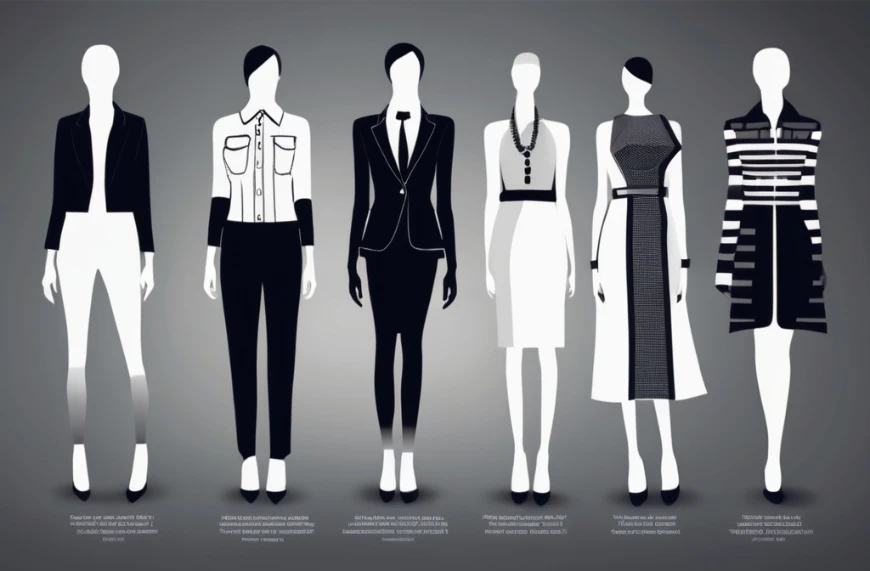
The Ukraine-Russia conflict, volatilities in the Middle East are disrupting the supply chain. Some ships cannot pass in the active war zones. This is increasing the tensions as shipping is facing trouble in the South China sea.
It’s also seeing a very different scenario. This trend is influencing the decision makers to diversify.
The production facilities and shipping disruptions can hinder consumer demand. This can also create price fluctuation.
The Future of Fashion Market
If we are looking ahead, the fashion industry is continuing to grow with the emergence of sustainability and technological advancement.
The fashion market will see a shift in consumer behavior. More e-commerce, digital platforms will be expected to grow.
Technologies like artificial intelligence will be integrated with the manufacturing process. Artificial intelligence, augmented reality or virtual reality will increase in fashion.
Additionally, big data analysis and data driven approaches in the fashion industry will increase in this industry.
The industry is expected to see a collaboration between fashion brands and tech companies.
New technological advancement will be integrated within the fashion items like wearable fashion. This industry is massive and constantly evolving with the global economy.
Few Last Words About Fashion Market Size
The future of fashion market size will see a growth. It will continue seeing a growth and transformation of the new technology.
Sustainability initiatives will make the shift in consumer behavior. This shift is also a critical factor.
The fashion industry will meet artificial intelligence and other technological advancement in the near future.
Sustainable and ethical practicing companies will get better. Technological integrations can improve the shopping experience and marketing activities.
Whichever brand is early to adapt these trends will determine the long-term success of the business and continue to grow in this industry.
This industry is expected to see a significant impact in the economic, cultural and market factors. These will direct how the fashion world works.

